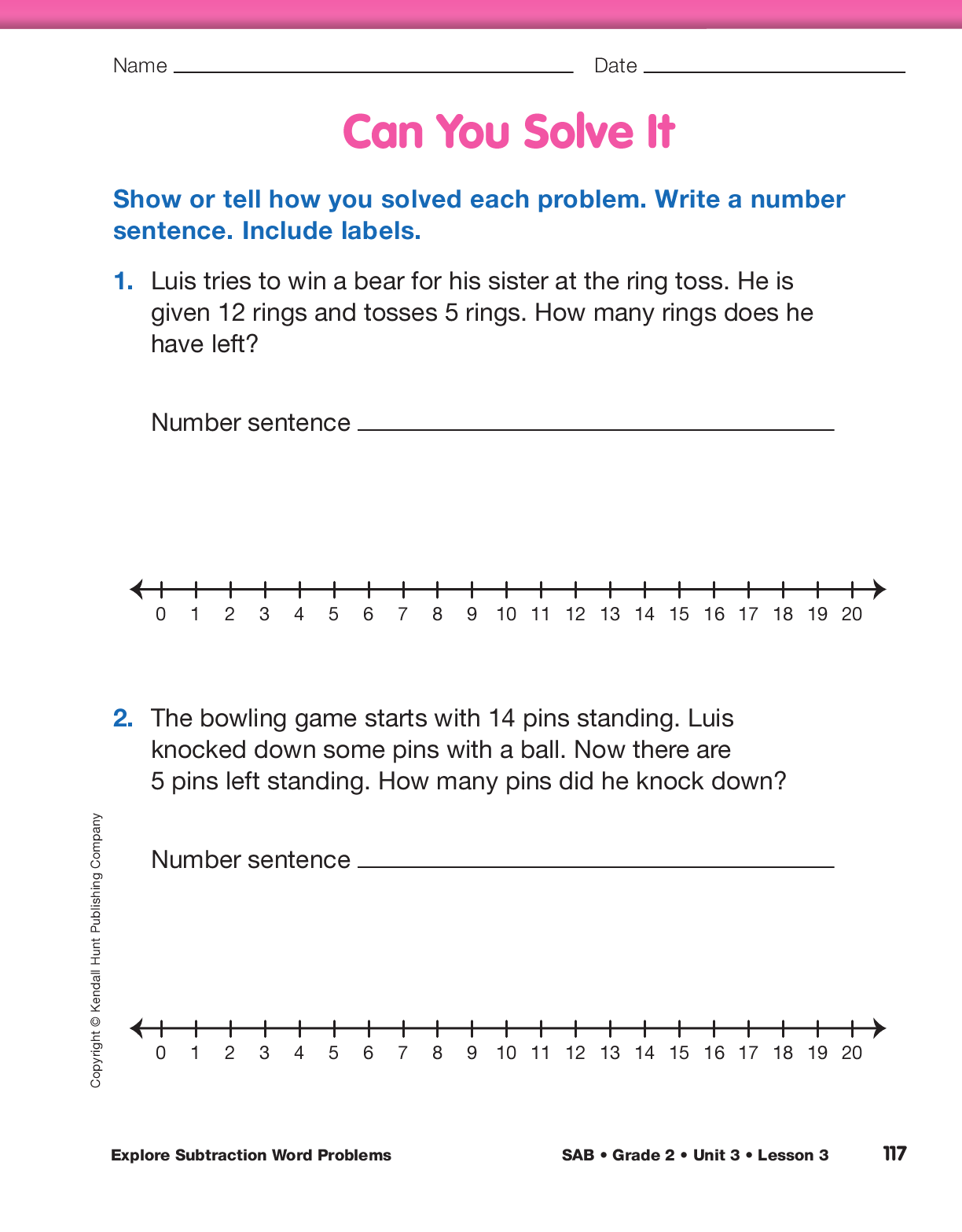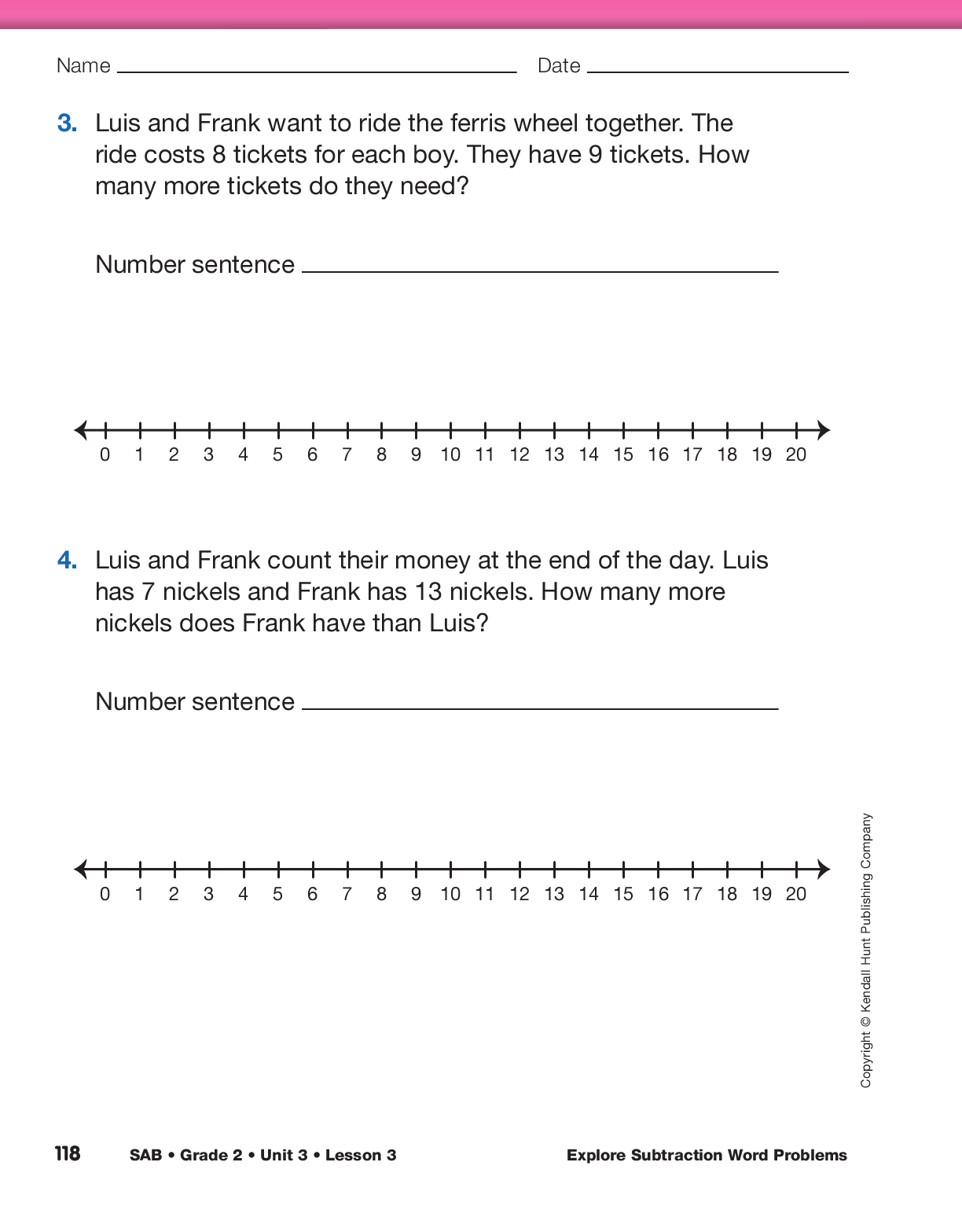Ask students to reflect on the work in this lesson by
having student pairs work in groups. Have one student
pair read his or her subtraction word problem on the
What’s the Problem page to a second student pair without
showing their number sentences and solutions.
After the second pair writes a number sentence for the
problem, have the two pairs discuss the strategies and
tools they used to solve the problem. Then have partners
switch roles.
If student pairs are unable to solve
the problem, have them discuss the following questions:
- Is there enough information for someone to solve
the problem?
- Is the question clear?
After the discussion, have student pairs revise their
word problems, if necessary.
Assign the Can You Solve It pages in the Student
Activity Book to assess students’ abilities to solve subtraction
word problems.

Use the Can You Solve It pages and the Feedback Box in the
Student Activity Book to assess students’ progress toward
the following Expectations and Math Practices: Represent
subtraction using multiple representations including number
sentences [E3]; solve subtraction problems using counting
strategies and related addition facts [E5]; use mental math
strategies and reasoning strategies to solve subtraction
problems [E6]; solve subtraction word problems
(separate/take away and compare) [E7]; know what is
important to solve a problem [MPE1]; find a strategy
[MPE2]; check for reasonableness [MPE3]; show work
[MPE5]; and use labels [MPE6].
To provide more useful feedback on students’ abilities to
solve the different types of subtraction word problems,
include comments in the Feedback Box about the specific
problem types. The following problem types are found in
these questions:
Question 1: Separate / Result Unknown
Question 2: Separate / Change Unknown
Question 3: Compare / Difference Unknown
Question 4: Compare / Difference Unknown
Question 5: Compare / Quantity Unknown
For targeted practice with subtraction word problems, place
copies of students’ word problems in a learning center.
















